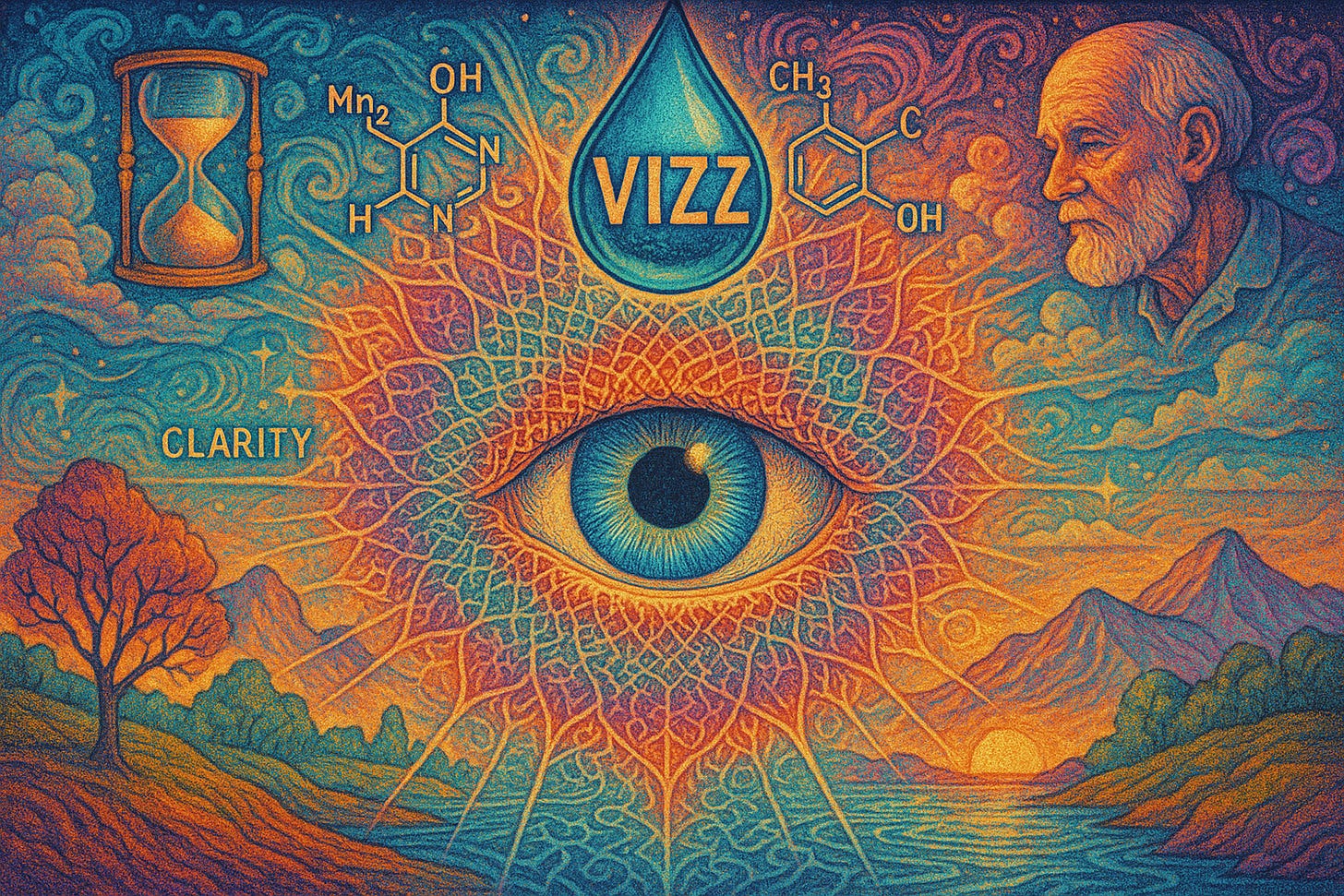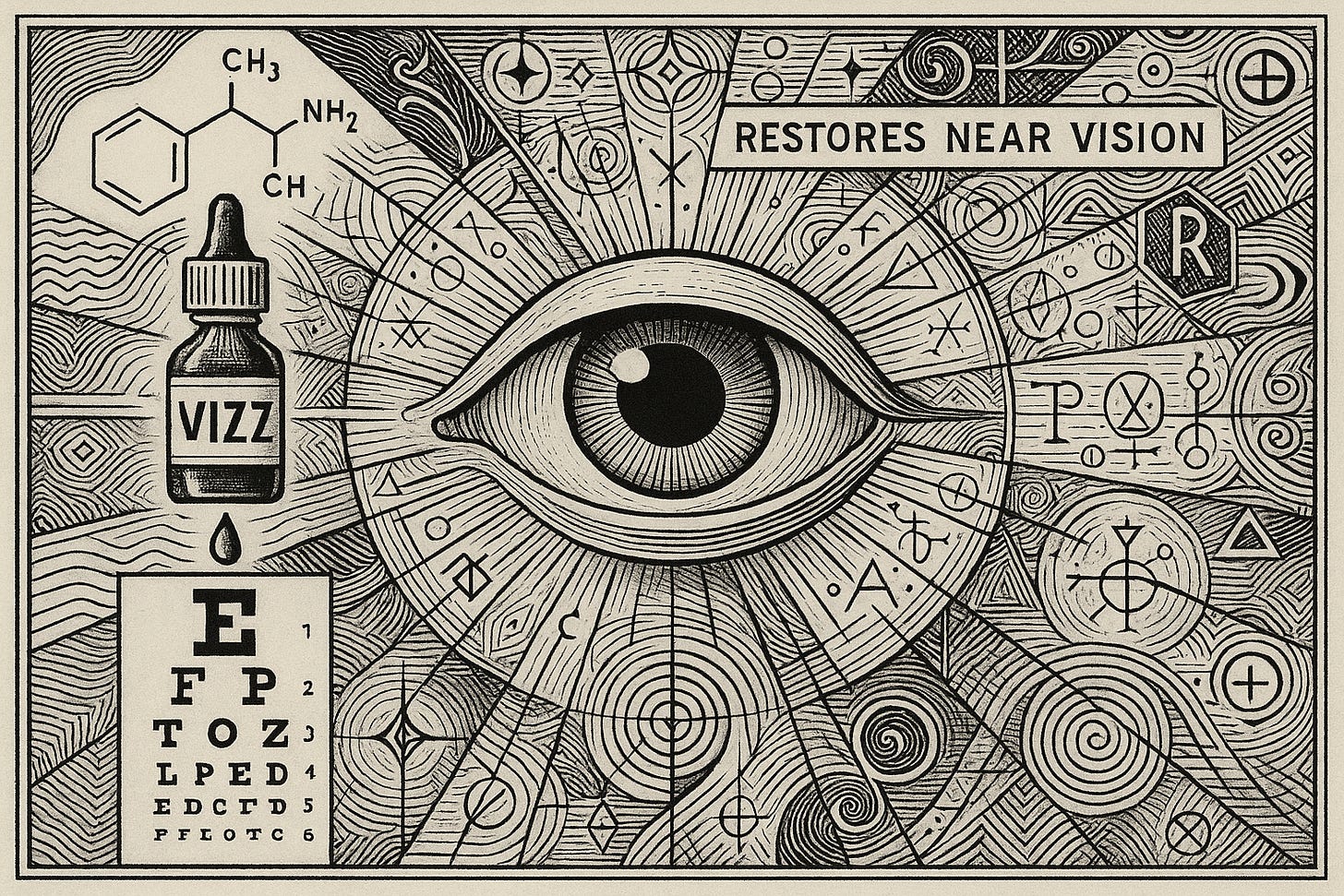VIZZ Eye Drops Promise 10-Hour Reading Vision Without Glasses—But Should You Ditch Your Readers?
Finally, a chemical solution that tackles presbyopia head-on—but is it worth ditching your readers?
Remember when you first realized you couldn't read the menu without holding it at arm's length? If you're over 45, you've probably joined the 128 million Americans playing the daily game of "where did I leave my reading glasses?" The FDA just approved VIZZ, the first aceclidine-based eye drops that promise to restore your near vision for up to 10 hours—no glasses required.
Here's the fascinating part: these drops work by creating a pinhole effect in your eye, similar to how squinting helps you see better. Unlike previous treatments that caused uncomfortable side effects by forcing your eye's focusing muscles to work overtime, VIZZ takes a gentler approach by selectively targeting just the pupil.
"About 65 to 71 percent of users gained three lines or more on the eye chart for near vision without losing distance clarity—the effect kicks in within 30 minutes and lasts throughout your workday."
What's the Big Idea?
The breakthrough lies in aceclidine's unique mechanism. While older presbyopia drops like Vuity activated both pupil and ciliary muscles (causing that annoying "zoomed-in" feeling and potential headaches), VIZZ acts as a "pupil-selective miotic." Think of it as precision engineering for your eye—it shrinks the pupil just enough to extend your depth of focus without messing with distance vision.
In clinical trials involving 466 participants aged 45 to 75, VIZZ demonstrated remarkable results. About 65 to 71 percent of users gained three lines or more on the eye chart for near vision without losing distance clarity. The effect kicks in within 30 minutes and lasts throughout your workday. Having experimented with red light therapy and other vision enhancement methods myself, I find it intriguing that we're finally seeing pharmaceutical approaches that don't compromise one type of vision for another.
Why Should You Care?
Presbyopia isn't just inconvenient—it's inevitable. Your eye's lens gradually loses flexibility with age, making it harder to focus on close objects. While reading glasses work fine, they're not always practical. Try threading a needle, reading your phone in bed, or checking prices at the grocery store while juggling glasses, and you'll understand the appeal of a drop-and-go solution.
The real game-changer is the 10-hour duration. Previous treatments lasted three to six hours at best, barely covering half your day. VIZZ users can apply drops in the morning and maintain clear near vision through dinner. For professionals who bounce between computer screens and paperwork, or anyone tired of the constant on-off glasses routine, this extended coverage could transform daily life.
That said, the convenience comes with trade-offs. You're putting chemicals in your eyes daily, indefinitely. The most common side effects—affecting about one in five users—include eye irritation, dim vision, and headaches. While these were mostly mild and temporary in trials, long-term effects of daily use remain unknown.
What's Next on the Horizon?
VIZZ represents just the beginning of what could become a new category of vision correction. Researchers are already exploring combination therapies that might extend duration even further or address multiple vision issues simultaneously. The success of pupil-selective approaches opens doors for treating other age-related vision changes without invasive procedures.
The bigger question is whether chemical vision correction will become as routine as wearing contacts. LENZ Therapeutics expects VIZZ to be widely available by late 2025, but adoption will depend on cost (not yet announced) and whether insurance covers it. Given that Americans already spend billions on reading glasses and vision correction, there's clearly a market for alternatives.
Future innovations might include longer-lasting formulations, drops that adjust throughout the day based on lighting conditions, or even treatments that address the root cause of lens inflexibility rather than just compensating for it.
Safety, Ethics, and Caveats
Before you toss your reading glasses, consider the limitations. VIZZ won't work for everyone—the trials excluded people with severe refractive errors or certain eye conditions. The FDA warns about potential risks including retinal tears in susceptible individuals, though these were rare. Night driving requires extra caution since the drops can cause temporary dim or dark vision.
There's also an ethical dimension to consider. While VIZZ offers genuine relief for presbyopia, it's treating aging as a medical condition requiring daily pharmaceutical intervention. Some critics argue we're overmedicalizing natural aging processes when simple, safe alternatives like reading glasses exist.
The trials, while comprehensive, only followed participants for six months maximum. We don't know what happens after years of daily use. Will effectiveness decrease over time? Could there be cumulative effects on eye health? These questions won't have answers until VIZZ has been on the market for years.
What This Could Mean for You
If you're considering VIZZ when it becomes available, start by getting a comprehensive eye exam. Your eye doctor needs to check for retinal issues or other conditions that might make you a poor candidate. If you get the green light, you might want to try it for specific situations first—perhaps important meetings or social events—before committing to daily use.
Cost will likely be the deciding factor for many. If VIZZ prices comparably to premium daily contact lenses (around $600 to $800 annually), it might appeal to those who already budget for vision correction. But if you're happy with a $20 pair of readers from the drugstore, the value proposition becomes harder to justify.
The sweet spot might be people who need reading glasses but haven't adapted well to progressive lenses or bifocals. Athletes, performers, and others whose activities make glasses impractical could also benefit significantly. Having explored various vision enhancement strategies over the years, I've learned that the best solution is often the one you'll actually use consistently.



